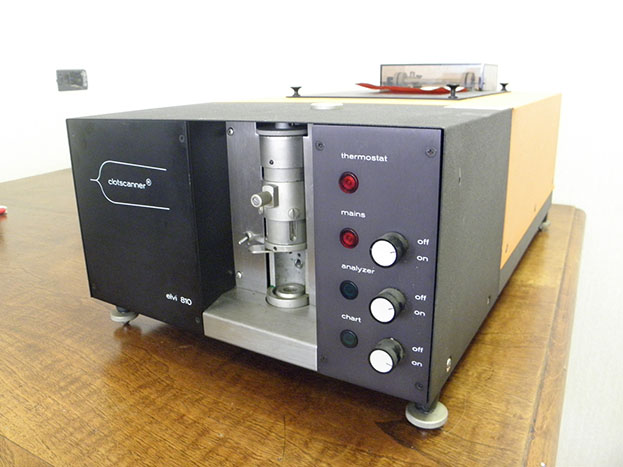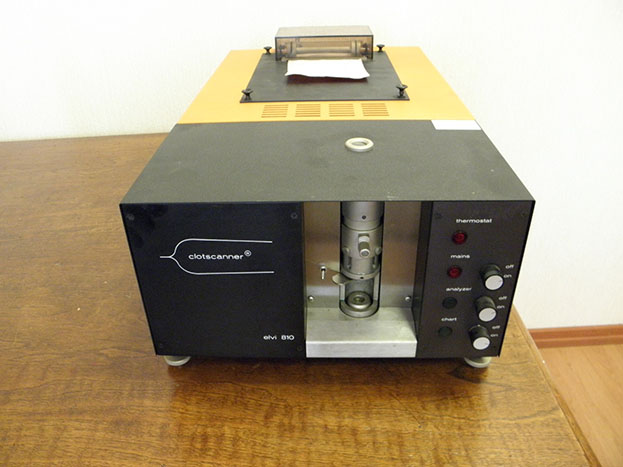Archeology
In the mid 1970’s the outstanding Italian mechanical industry created the “clotscanner”, a neat one-channel instrument for the “automatic recording of thromboelastograms” produced by the company Elvi Spa of Milano.
In those times when electronics were not as developed as today, the instrument still used the old optical system (mirror and photocells) to output the signal. In 1978 Elvi applied for US Patent 4.193.293 describing, amongst other improvements invented by Francesco Cavallari , an electromagnetic sensor.
Thus the technology has been replaced today by electromagnetic sensors that are more precise and eliminate decays. The “clotscanner” recorded the graphs on pressure sensitive paper using a huge recorder mounted at the back to catch and reproduce the signal. Today it is replaced by a computer connection and software, enabling Hemologix to automate the manual positioning of the blood sample in its ThromboElastoMeter-Automated (TEM-A) modular instruments.



